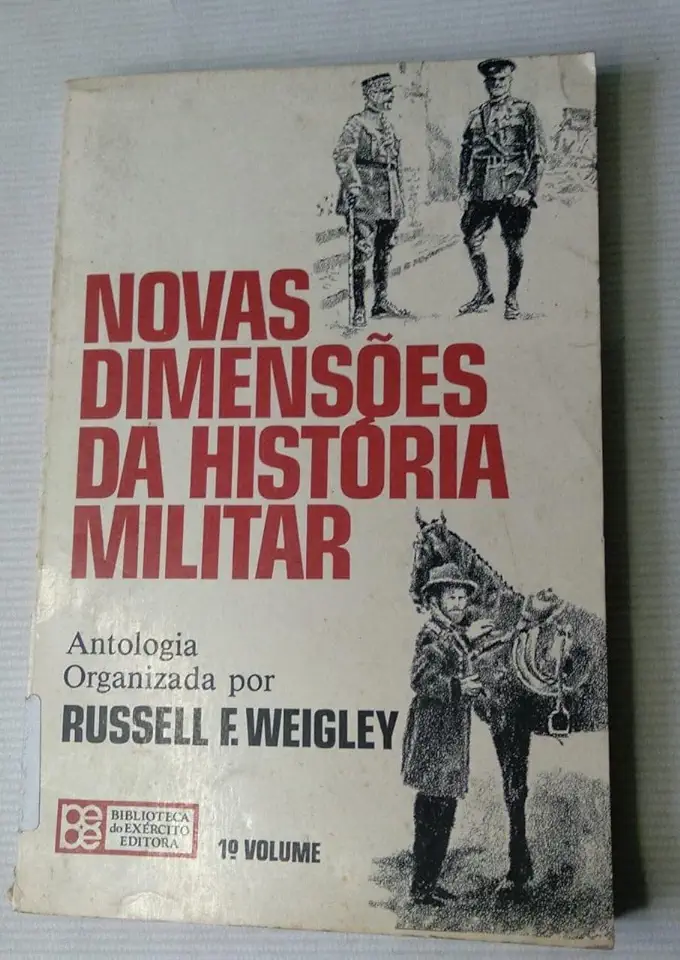
The American Way of War: A History of United States Military Strategy and Policy
The American Way of War: A History of United States Military Strategy and Policy
By Russell F. Weigley
A sweeping and authoritative history of American military strategy and policy from the colonial era to the present day.
In this magisterial work, Russell F. Weigley offers a comprehensive and insightful account of the development of American military strategy and policy from the colonial era to the present day. Drawing on a wealth of primary and secondary sources, Weigley traces the evolution of American military thought and practice from the earliest days of the republic to the challenges of the twenty-first century.
Weigley's analysis is both comprehensive and nuanced, and he offers a balanced and objective assessment of American military decision-making. He explores the impact of political, economic, and social factors on military strategy and policy, and he pays careful attention to the role of technology and innovation in shaping the American way of war.
The American Way of War is a must-read for anyone interested in American history, military history, or international relations. It is a magisterial work of scholarship that will stand as the definitive history of American military strategy and policy for years to come.
Key Themes
The American way of war is characterized by a number of key themes, including:
- A focus on technology and innovation
- A preference for offensive operations
- A willingness to use military force to achieve political objectives
- A commitment to internationalism and collective security
These themes have shaped American military strategy and policy from the colonial era to the present day.
The Colonial Era
- The American way of war began to take shape during the colonial era.
- The colonists relied on a variety of military strategies and tactics, including guerrilla warfare, hit-and-run raids, and scorched-earth tactics.
- These strategies and tactics were effective in defeating the British in the American Revolution.
The Early Republic
- In the early republic, the United States adopted a policy of isolationism.
- This policy was based on the belief that the United States should avoid entangling itself in European conflicts.
- However, the United States did intervene in a number of conflicts in the Western Hemisphere, including the War of 1812 and the Mexican-American War.
The Civil War
- The Civil War was a major turning point in American military history.
- The war saw the emergence of new technologies, such as the rifled musket and the ironclad warship.
- The war also saw the development of new strategies and tactics, such as trench warfare and the use of cavalry.
The Spanish-American War
- The Spanish-American War was a brief but decisive conflict that marked the United States' emergence as a global power.
- The war saw the United States defeat Spain and acquire control of Puerto Rico, Guam, and the Philippines.
- The war also led to the United States' involvement in the First World War.
The World Wars
- The World Wars were the most destructive conflicts in human history.
- The United States played a major role in both wars, and its military strategy and policy were shaped by the experiences of those conflicts.
- The World Wars led to the development of new technologies, such as the atomic bomb and the jet engine.
- The wars also led to the development of new strategies and tactics, such as strategic bombing and amphibious warfare.
The Cold War
- The Cold War was a global conflict between the United States and the Soviet Union that lasted for nearly fifty years.
- The Cold War was fought primarily through proxy wars, but the United States and the Soviet Union also came close to nuclear war on several occasions.
- The Cold War had a profound impact on American military strategy and policy.
- The Cold War led to the development of new technologies, such as the intercontinental ballistic missile and the nuclear submarine.
- The Cold War also led to the development of new strategies and tactics, such as containment and deterrence.
The Post-Cold War Era
- The end of the Cold War led to a period of relative peace and prosperity for the United States.
- However, the United States has continued to be involved in a number of military conflicts, including the Gulf War, the War in Afghanistan, and the War in Iraq.
- The post-Cold War era has also seen the rise of new challenges to American military strategy and policy, such as terrorism and cyber warfare.
Conclusion
The American way of war is a complex and ever-evolving phenomenon. It has been shaped by a variety of factors, including political, economic, social, and technological factors. The American way of war has also been shaped by the experiences of the United States in war and peace.
The American Way of War is a magisterial work of scholarship that offers a comprehensive and insightful account of the development of American military strategy and policy from the colonial era to the present day. It is a must-read for anyone interested in American history, military history, or international relations.